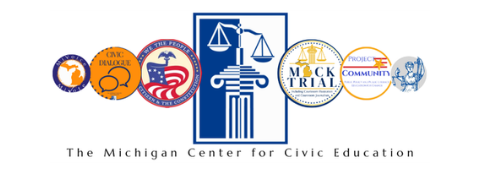The goal of this activity is to introduce 8th grade students to the Fourteenth Amendment of the U. S. Constitution (equal protection under the law).
Civics Lessons
Constitution Day Lesson 14th Amendment
The Preamble to the Constitution: How Do You Make a More Perfect Union?
These lessons help your students begin to understand why the Founders felt a need to establish a more perfect Union and how they proposed to accomplish such a weighty task.
The Invaders: A Constitutional Rights Activity
Introduces students to the rights guaranteed in the U.S. Constitution.
Responsibility and the U.S. Constitution
In this lesson, students learn about responsibility and apply the concept to segments of the U.S. Constitution.
A Visitor from Outer Space
Students learn about the Bill of Rights and the Importance of Rights
Michigan Court System
The lesson includes a read aloud book to teach students about the Michigan Court System.
The Tired King
Students learn about the three functions of government in this interactive role play.
What Basic Ideas About Government Are included in the Preamble to the Constitution?
This lesson explores some ideas in the Preamble to the Constitution. Students learn that the power to govern belongs to the people who have created the government to protect their rights and promote their welfare.
The Exchange: Should Students’ Cyber Speech Be Protected Under the First Amendment?
This lesson encourages students to deliberate on the issue of cyber speech and the First Amendment. Through the use of court cases and school policy, students will be able to define student expression rights and then evaluate the necessity and constitutionality of censoring and reprimanding students’ online social networking behavior.
Connecting the Separate Powers
In this lesson, students will gain an understanding of the separation of powers using role playing and discussion. Students will identify which parts of the Constitution provide for the branches of our government, and will categorize public officials into one of these three branches.

